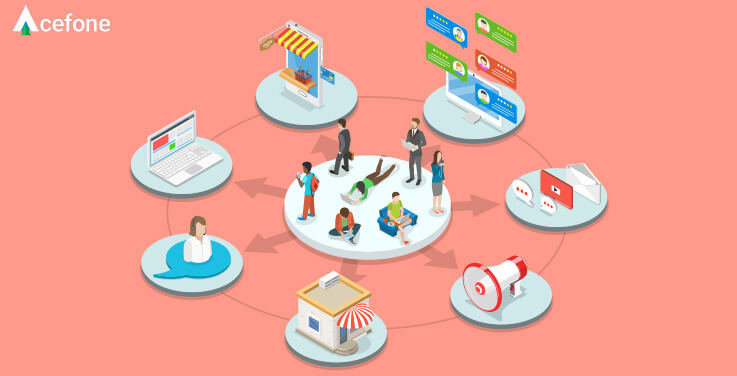Back in 2015, there was an announcement by BT that PSTN networks in the UK will move towards closure and completely shut down in 2025. The countdown has begun, with just about 3 years left to the grand shutdown.
It is important to be aware of the changes one can expect, the reasons behind these changes, their implications and the way forward. And it is critical to review the preparedness of everyone and everything that is likely to be impacted.
Before moving further on the topic, let us understand the abbreviations that we will use in this blog.
Keywords to know
-
PSTN
It stands for Public Switched Telephone network. It refers to the traditional telephony system that runs on analogue technology, relying on copper cables and telephone lines.
-
ISDN
ISDN is an acronym for Integrated Services Digital Network. It came into being in the 80s, allowing data and voice to be transmitted simultaneously. Video calls came into being with this.
-
VoIP
Voice over Internet Protocol, or VoIP, uses the Internet’s ability to carry voice via data packets. One needs only a stable connection to make VoIP calls without the need for traditional devices like telephones.
-
Hosted communication
This is a solution for modern communication hosted in the cloud. It allows consumers to use all features of VoIP with just an Internet connection. There is no requirement to buy and maintain elaborate hardware systems.
The event of 2025
It has been announced by the national telecom services provider that all PSTN and ISDN services in the UK will be switched off completely in 2025. The phase-down has begun and businesses will no longer be allowed to obtain these services.
This is a big event with a far-reaching impact.
This move essentially brings the curtains down on the use of analogous systems and kicks off a full shift to digital communications.
The ‘why’ behind the move
The technology currently in use is dated and the equipment is ageing. With limited manufacturers of old technology equipment, the number of supplies is also declining.
While there have been upgrades, adaptations, updates and improvements to analogue systems over the years, the costs of running the system aren’t light on the pocket. And passing on increased costs to consumers is certainly not the best idea.
At the same time, the communication needs of businesses and individuals have evolved significantly. Existing PSTN systems are ill-equipped to keep pace with their needs and demands.
Newer communication technologies like VoIP have galloped and are more suited for modern businesses. Alternate methods like fibre networks are more robust, faster and cheaper to be used in the communication backbone.
All these factors put together have paved the way for the national service provider to announce the shutdown and move to alternate technologies that are more efficient.
The impact
Almost everyone and everything that continues to use traditional PSTN services will be affected. It is not just voice communication that will be impacted by this shutdown.
There is a multitude of applications, beyond voice, that continue to depend upon PSTN and ISDN for operations. A range of them, from door systems to alarm systems and point of sale machines to broadband services, still use the technology.
The time to migrate is now.
Putting the decision off to a later date is likely to put business operations at risk of disruption. While three years looks like a long time, it is not. As we move closer to the shutdown, we will see a clamour from laggards.
Alternate technologies that are robust exist already, and we also have the benefit of learning from the experience of early movers in the migration. It is best to avoid the last-minute rush.
The way forward
Fortunately, there are many alternatives to PSTN that are superior on all parameters. VoIP is certainly the front runner for voice communication. And making a switch to VoIP is simple; the technology itself makes it easy.
All you need to do is choose between a solution that is ‘owned’ and is on-site or one that is hosted on the cloud and offered by a service provider.
The on-premises solution requires designing and installing your own hardware. While this gives complete control to the business, it is an expensive one to set-up and maintain.
The other option that is available and has significantly grown in popularity is the hosted solution.
A hosted solution requires no additional hardware or storage to be installed on-site. There are no costs of maintenance either. With a hosted VoIP solution, you can use various technologies as a service while you continue to focus on growing your business as usual.
There are good reasons for the popularity and adoption of these hosted services for communication. The top ones are:
-
Quick set-up
Quick installation and deployment through automated provisioning is a great feature.
-
Flexibility
Phones are not fixed for a location. They are accessible anywhere globally as long as the Internet is available.
-
Scalability
Technically, phone systems based on the Internet do not come with limits on users.
-
Upgraded technology
Digital is way ahead of the analogue technologies that we have been using all these years. It is robust and significantly faster.
The opportunity
The shutdown is an opportunity to leap ahead and sharpen your strategies for growth.
Here are the two simple things to keep in mind:
-
Keep the timelines
It is better to be early than to be late. As mentioned earlier in this article, the time to take action is now. It is never too early.
-
Capitalise on the window
This shutdown of PSTN is a big change.
All businesses will have to upgrade and migrate. And there is an available window of three years at the maximum. The early movers will reap the benefits faster and will be able to extend superior experiences to their customers faster than their competitors.
Conclusion
The shutdown is a major milestone in the communication systems.
There are timelines and the window to prepare still exists. And there are actions to be taken.
Yet, the shutdown brings with it several opportunities and benefits that businesses must take advantage of as soon as possible.
Let us review the top benefits:
- Removal of high-maintenance devices based on old technologies
- Reduction in downtimes and system failures
- Higher productivity and opportunities for collaboration
- Superior customer experiences
- Mobility and flexibility in business communication
- Simpler security solutions around communication
- Cost savings
To repeat, the time to plan and take action is now. Any delays will only add to costs and also turn into a missed opportunity.














